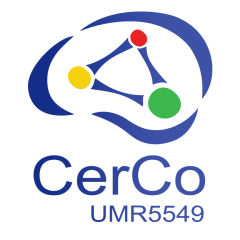Head : Leila REDDY
The MAOS team focuses on the recognition and the neural representation of objects (common, famous and unique) and object categories. In particular, we use biologically pertinent stimuli, more specifically photographs of natural scenes. By combining experimental projects in healthy humans and patients (psychophysic, EEG, fMRI, intracranial recordings) with theoretical approaches and models, the aims of the team include : elucidating the key mechanisms underlying the amazing efficiency of biological visual systems, analyzing how learning and expertise can shape visual representations and the neural substrates ensuring their memorization, and describing the effects of healthy and pathological aging.
Research themes
- Changes in neural representations following learning and attention Responsable : Leila Reddy
- Familiarity for well- or less well-known stimuli. Responsable : Emmanuel Barbeau
- Very long term memories. Responsable : Simon Thorpe
- Acquisition of new objects and words throughout life. Responsable : Florence Rémy
- Memory pathologies. Responsable : Emmanuel Barbeau
- Models of learning. Responsable : Tim Masquelier
Permanent research staff
- Emmanuel BARBEAU, DR2
- Micèle FABRE-THORPE, DR1 Emeritus
- Michelle GUE, Pr
- Timothée MASQUELIER, CRCN
- Leila REDDY, CRCN
- Florence REMY, MCU
- Simon THORPE, DRCE
- Luc VALTON, PH
Post-Doctoral Fellow
- Manuel MERCIER
- Milad MOZAFARI
PhD students
- Lina BONILLA
- Bhavin CHOKSI
- Ludovic GARDY
- Jakub KOPAL
- Anaïs SERVAIS
- Anna SZABO
Selected Publications
- Bastin C, Delhaye E, Moulin C, Barbeau EJ. (2019). Novelty processing and memory impairment in Alzheimer’s disease: a review. Neuroscience and Biobehavioural Reviews, 100:237-249. https://doi.org/10.1016/j.neubiorev…
- VanRullen, R., Reddy, L. (2019). Reconstructing Faces from fMRI Patterns using Deep Generative Neural Networks. Communications Biology (in press).
- Kheradpisheh, S. R., Ganjtabesh, M., Thorpe, S. J., and Masquelier, T. (2018). STDP-based spiking deep convolutional neural networks for object recognition. Neural Networks, 99:56–67
- Chauhan, T., Masquelier, T., Montlibert, A., and Cottereau, B. R. (2018). Emergence of Binocular Disparity Selectivity through Hebbian Learning. The Journal of Neuroscience, 38(44):9563–9578
- Jonin PY, Besson G, Lajoie R, Pariente J, Belliard S, Barillot C, Barbeau EJ. (2018). Superior explicit memory despite severe developmental amnesia: in-depth case study and neural correlates. Hippocampus, 28(12):867-88. https://doi.org/10.1002/hipo.23010
- Pergola, G, Danet, L, Pitel AL, Carlesimo GA, Segobin S, Pariente, J, Suchan, B, Mitchell AS, Barbeau EJ. (2018). The regulatory role of the human mediodorsal thalamus, Trends in Cognitive Science, 22(11):1011-1025. https://doi.org/10.1016/j.tics.2018…
- Larzabal C, Tramoni E, Muratot S, Thorpe SJ, Barbeau EJ. (2018). Extremely long-term memory and familiarity after 12 years. Cognition, 170:254-262. https://doi.org/10.1016/j.cognition…
- Danet L, Pariente J, Eustache P, Raposo N, Sibon I, Albucher JF, Bonneville F, Peran P, Barbeau EJ. (2017). Medial thalamic stroke and its impact on familiarity and recollection. Elife, 6. pii: e28141. https://doi.org/10.7554/eLife.28141
- Dobs, K., Ma, W. J., & Reddy, L. (2017). Near-optimal integration of facial form and motion. Scientific reports, 7(1), 11002.
